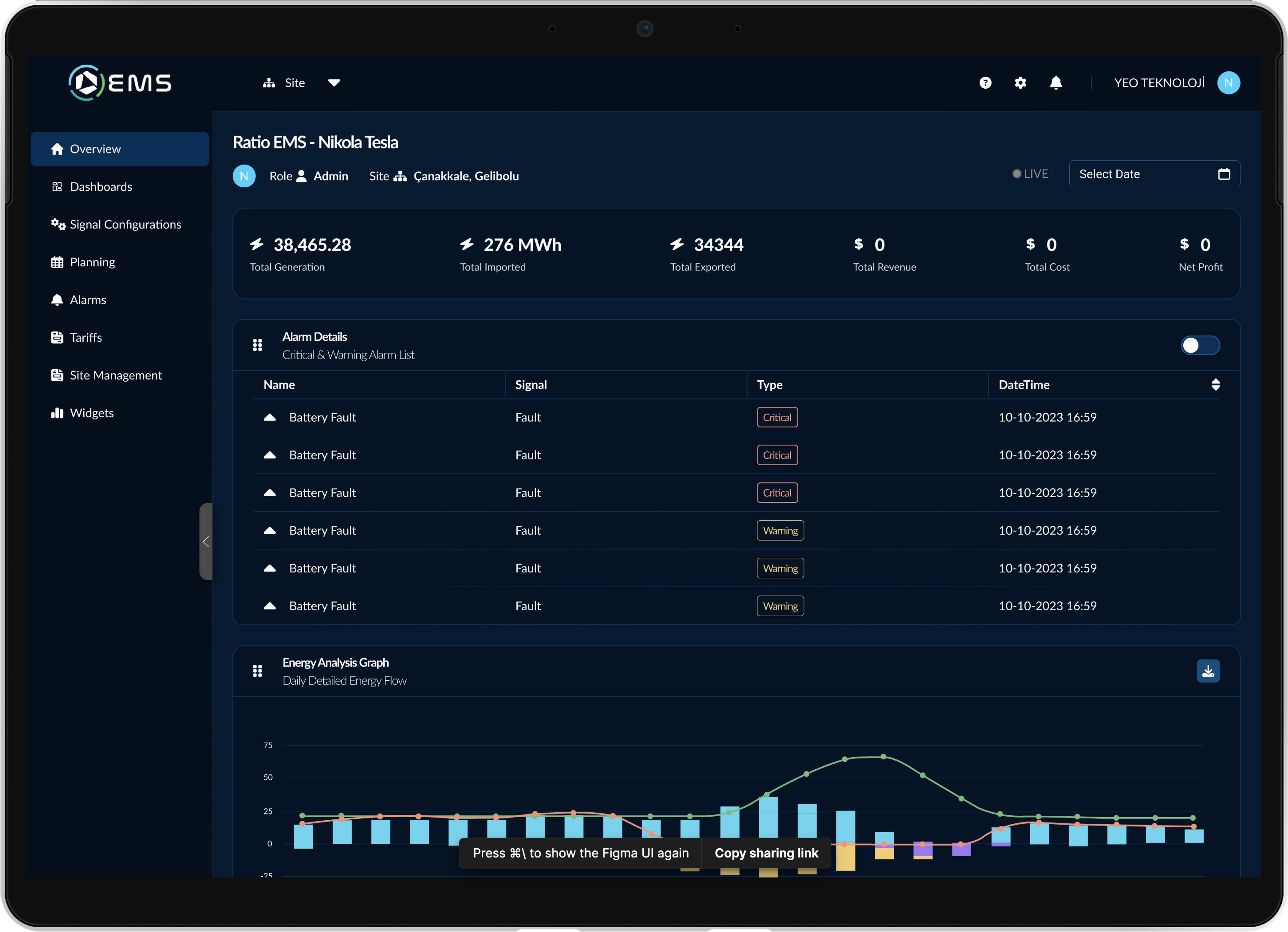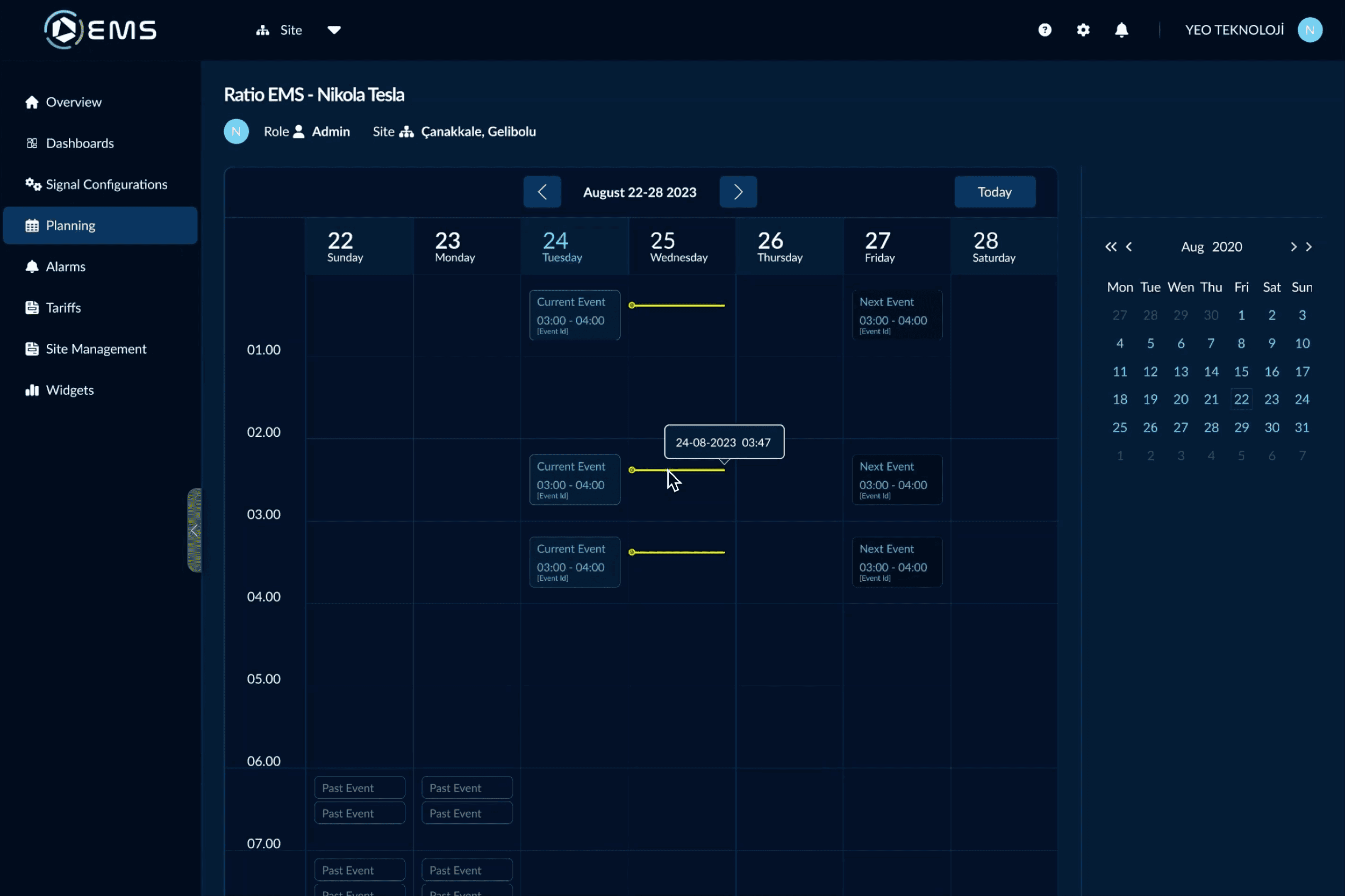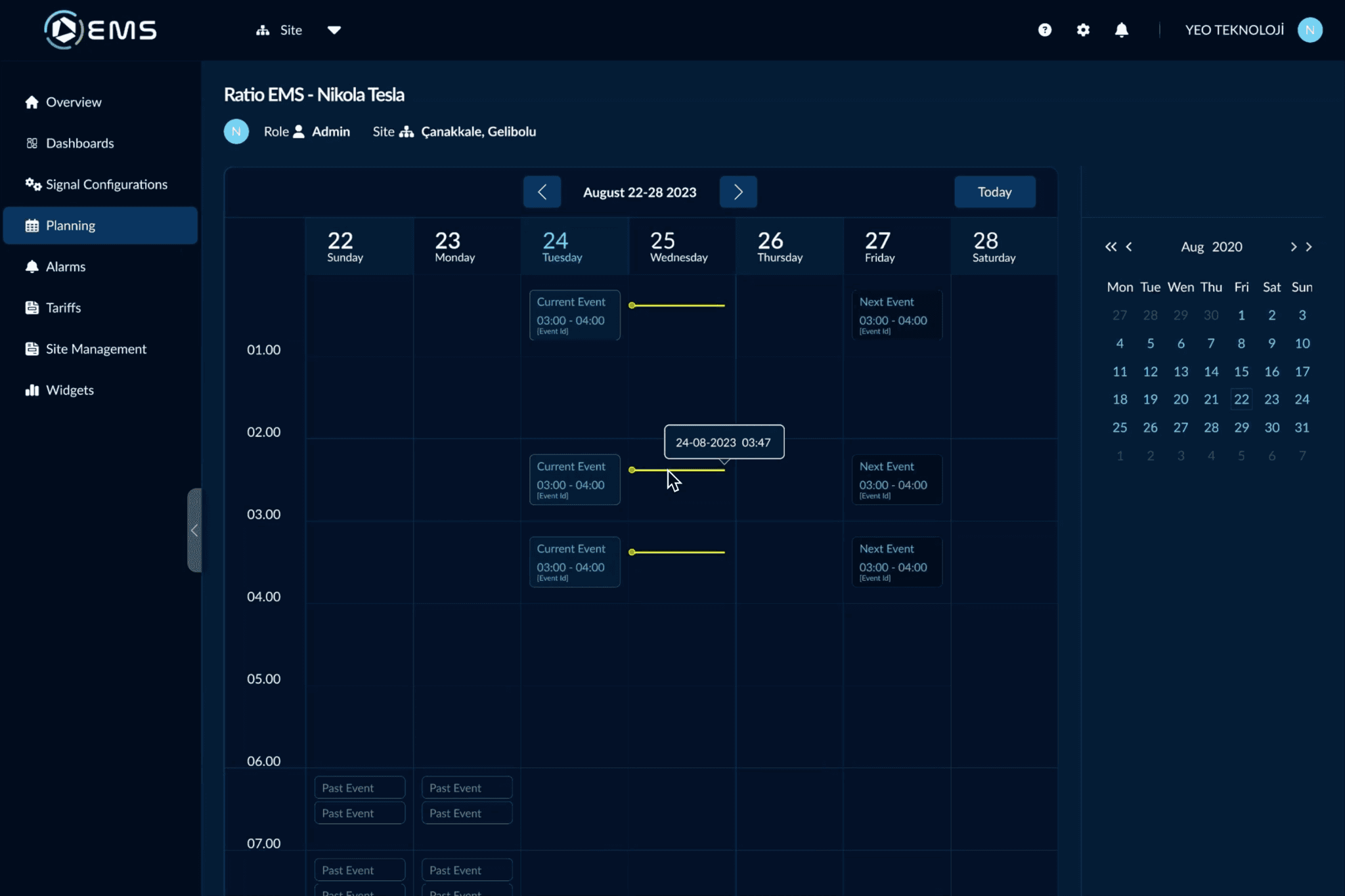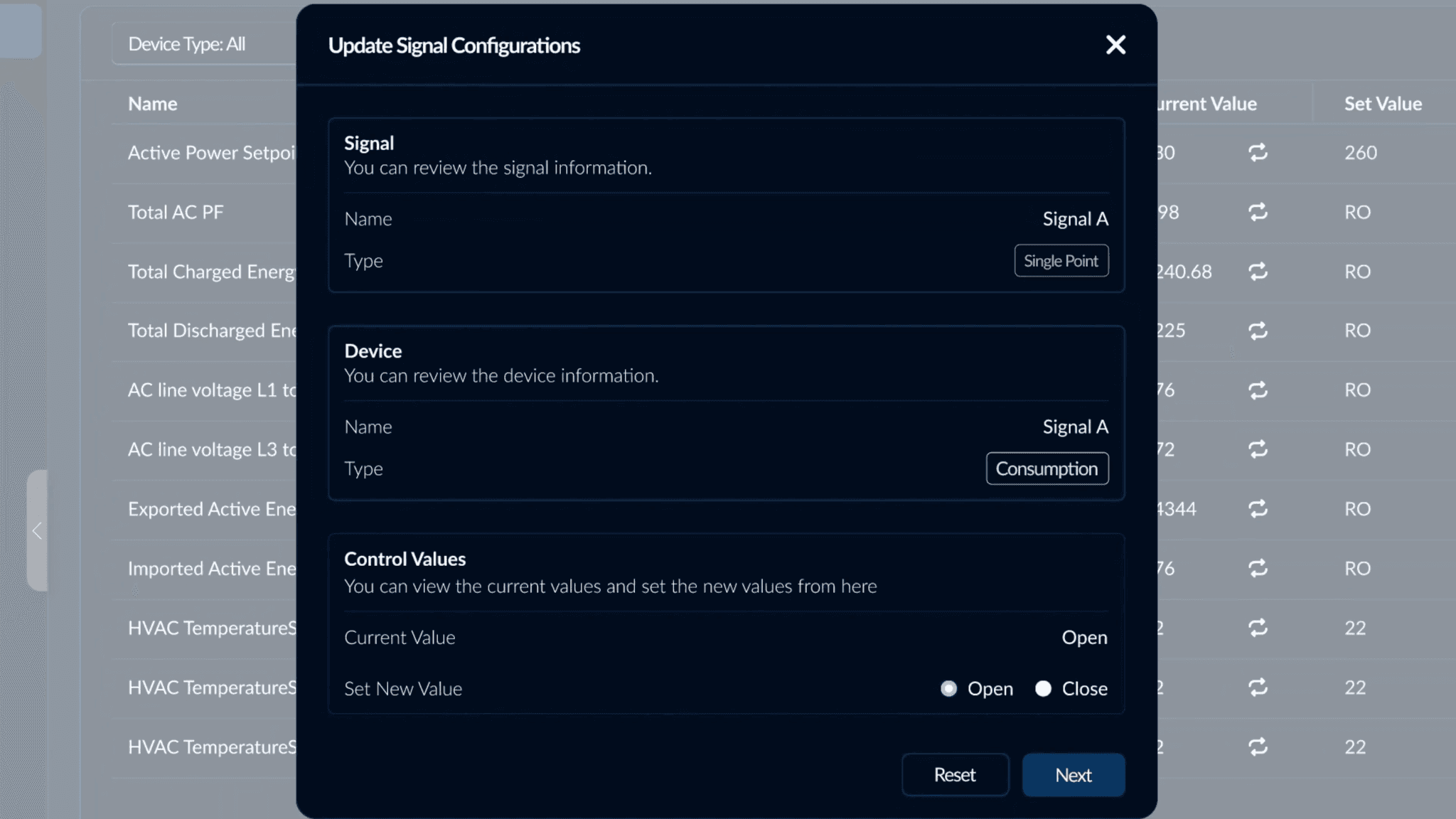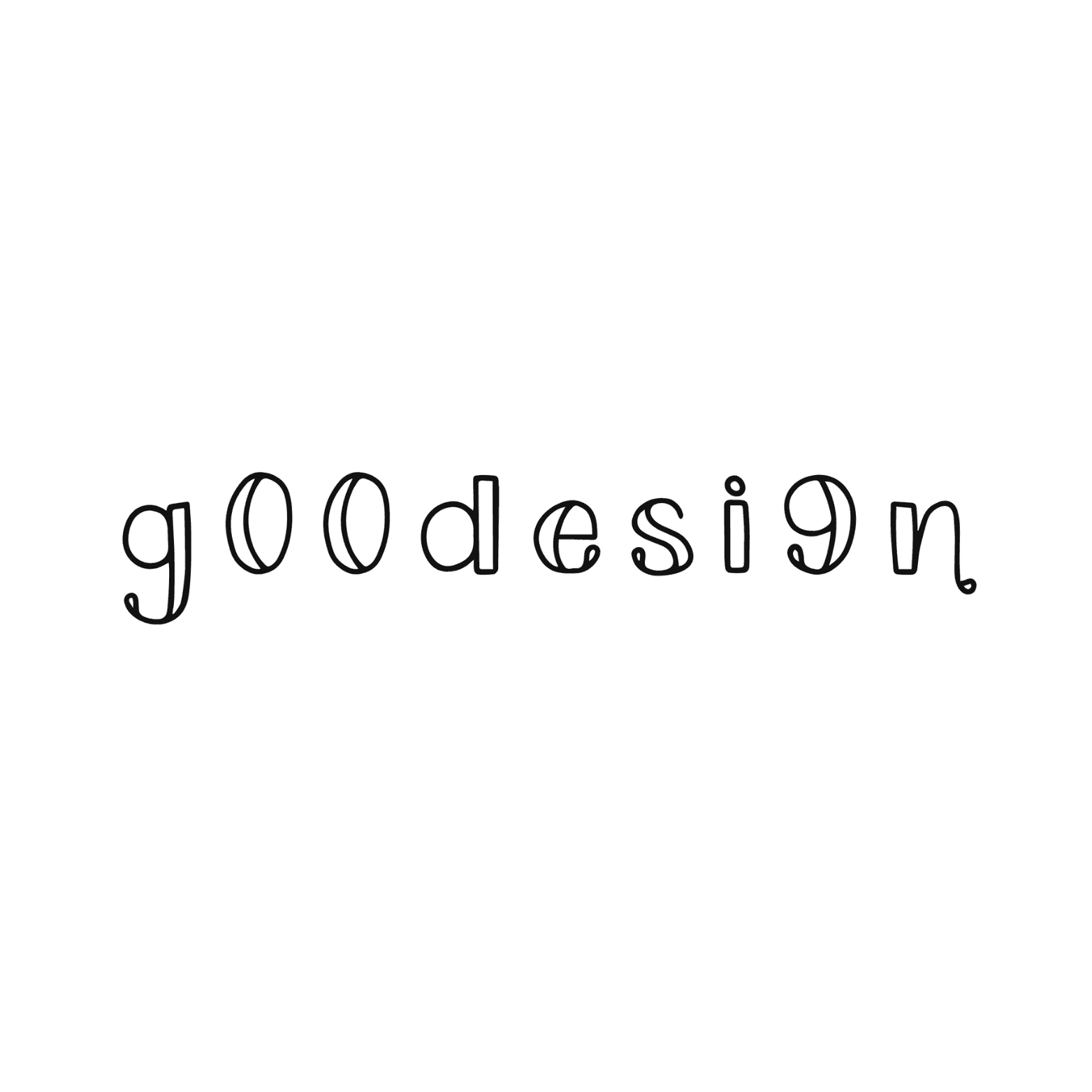Motivation

WHAT'S THE BACKGROUND?
Managing energy schedules is a hassle without a dedicated tool; I’m left juggling various tasks manually.
I often miss optimal energy management opportunities because there’s no easy way to set up control signals in advance.
The lack of a planning feature makes it hard to stay organized and on top of energy control tasks.
Without a streamlined scheduling option, planning and adjusting energy use feels chaotic and inefficient.
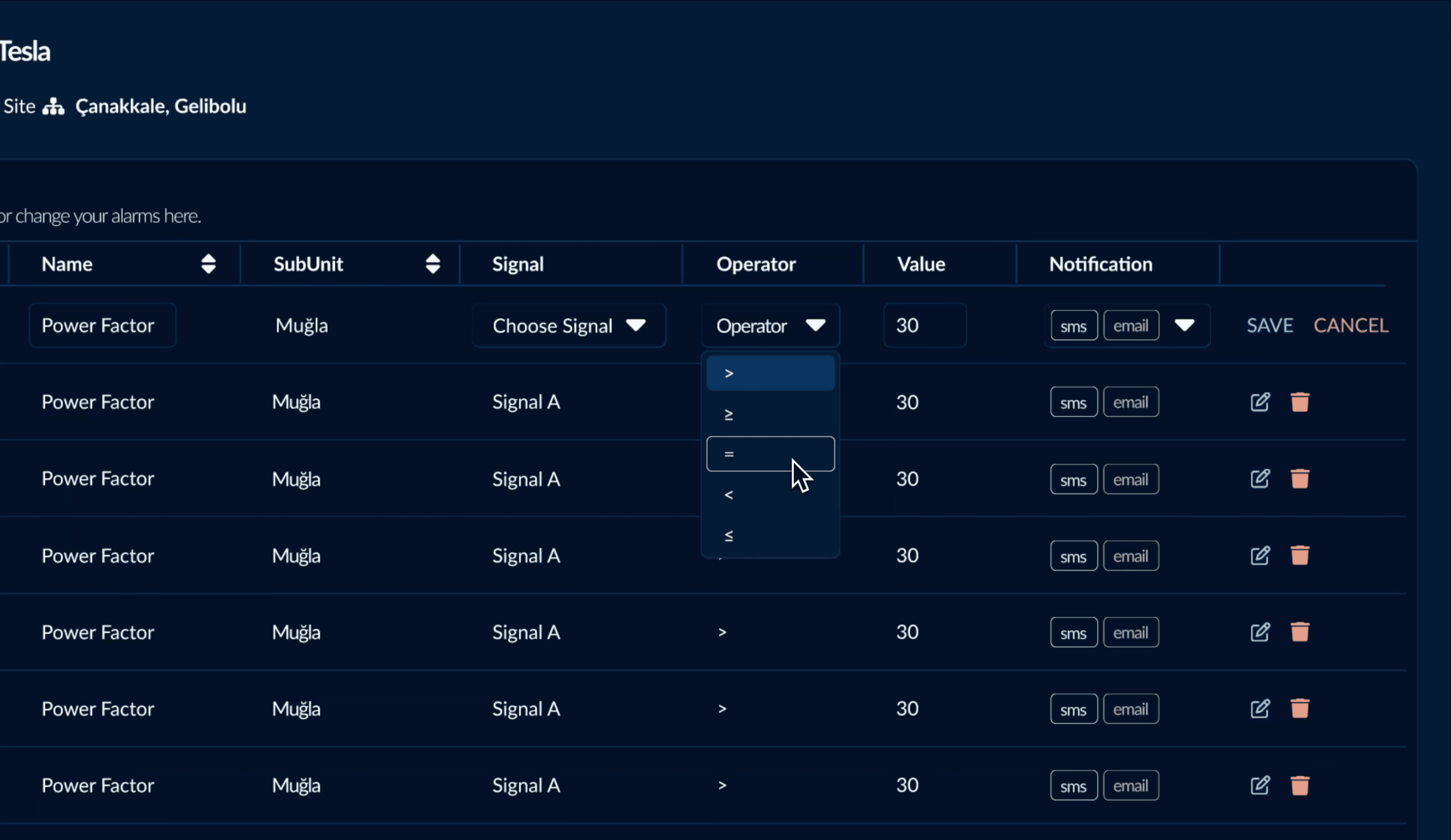

We recently introduced the Planning Module in Ratio EMS, and the initial results are
What is this?
The Planning Module introduces advanced scheduling components, giving users greater control over their energy systems.
It simplifies the creation of detailed plans, making energy management more efficient and sustainable.
DIGGING DEEPER…
Reviewing EnergyCo metrics
Looking into the data, we observed that EnergyCo, after implementing the planning feature, significantly improved its energy management efficiency. By utilizing the hourly scheduling capabilities of the Planning Module, the firm was able to optimize energy distribution and reduce waste, leading to better cost management and sustainability.
15%
increase in energy efficiency among users actively utilizing the Planning Module
30%
reduction in energy waste due to precise scheduling.

3.2 million
scheduled control signals successfully executed.
Why does this mean for RatioEMS?
The Planning Module is a key tool for energy management, but it has room for improvement. Enhancing the user interface and streamlining the scheduling process can boost adoption and user engagement. Our data shows that users benefit from precise scheduling, and integrating additional features could further simplify and improve the planning experience. These improvements will not only enhance user satisfaction but also strengthen Ratio EMS's position as a leader in energy management, driving greater efficiency and sustainability.
THE GOAL
Streamline energy management by providing an intuitive scheduling interface that allows users to easily create and adjust detailed hourly energy plans with the Planning Module
Understand
IT BEGAN WITH RESEARCH…
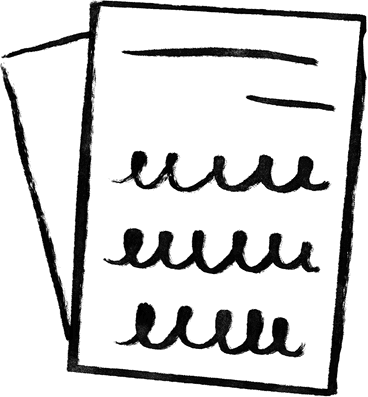
1
UXR Review
I reviewed 4 detailed UXR studies to understand users' experiences and challenges with existing energy planning features.

2
Competitive Audit
I analyzed 5 different energy management systems to examine current interactions and patterns related to scheduling and planning.

REVIEWING EXISTING UX RESEARCH
To understand the current landscape, I reviewed 4 UX research studies focused on energy management systems and their planning features, particularly in comparison with key competitors.
Complex Interfaces
Many users find that the planning interfaces in current energy management systems are overly complicated. Tools often require multiple steps to create or adjust a schedule, leading to frustration and lower adoption rates.
Limited Customization Options
It often lacks the flexibility needed for users to tailor energy plans to their specific needs. This limitation can prevent users from optimizing their energy usage effectively, making it necessary to enhance customization options in the planning feature.
Inefficient Feature Discovery
Users often struggle to locate and understand the full range of planning features available in competitor tools. This lack of discoverability reduces the likelihood of users fully utilizing the capabilities of the system, highlighting the need for better feature visibility and guidance within Ratio EMS.
Inflexible Scheduling Parameters
In many existing systems, the scheduling parameters are rigid, making it difficult for users to adjust plans on the fly. This inflexibility can lead to suboptimal energy management and user dissatisfaction.

HOW DOES ENERGY PLANNING VARY?
Competitive Analysis
Next, I sought to better understand the mechanics of existing energy planning systems through a competitive audit of 5 well-established energy management platforms. Each platform approaches scheduling and planning in energy management with distinct strategies, prioritizing specific features according to their unique objectives. I started by breaking down these different purposes...
EnergyCO
EcoPower
GreenGrid
PowerPlan
Susrainergy
Create detailed daily and hourly energy usage plans.
Monitor energy consumption in real-time and adjust plans accordingly.
Automate energy-saving schedules based on usage patterns.
Design energy-saving schedules and integrate renewable energy sources.
Set peak and off-peak energy usage periods for cost optimization.
Utilize advanced forecasting tools for long-term energy planning.
Manage multiple facilities' energy usage with centralized scheduling.
Generate predictive schedules based on historical energy data.
Coordinate energy distribution across different power sources.
Customize energy plans with modular time blocks and consumption limits.
Use AI-driven suggestions to optimize energy distribution.
Automate repetitive energy schedules with preset configurations.
Adjust energy plans dynamically based on external factors like weather.
Set up energy alerts and notifications to modify schedules on-the-go.
Prioritize critical energy usage areas during high-demand periods.
EnergyCO
EcoPower
GreenGrid
PowerPlan
Susrainergy
Facility managers for centralized control and scheduling.
Energy consultants to optimize plans and usage patterns.
Utility providers for real-time grid data and pricing updates.
Renewable energy suppliers for integrating solar, wind, or other clean energy sources.
Homeowners and business owners for tailored energy usage plans.
Local utility companies for managing peak and off-peak energy rates.
Building managers across multiple locations for coordinated energy usage.
Energy market analysts to adjust plans based on fluctuating energy prices.
Maintenance teams for real-time updates on system health and performance.
AI-driven systems for real-time recommendations and adjustments.
Renewable energy providers for managing distributed energy resources.
Technical support teams for resolving issues related to system efficiency and energy scheduling.
Weather forecasting services for adjusting plans based on external conditions.
Energy efficiency experts for long-term energy saving strategies.
Backup power providers for managing emergency and critical power needs during outages.

A REVIEW OF PLANNING AND SCHEDULING FEATURES ACROSS LEADING ENERGY MANAGEMENT SYSTEMS…
Competitive Audit
I conducted a competitive audit of planning systems in 5 different energy management platforms, analyzing how each system manages energy schedules and adapts to various user needs. Unfortunately, the full competitive analysis report is confidential under NDA.
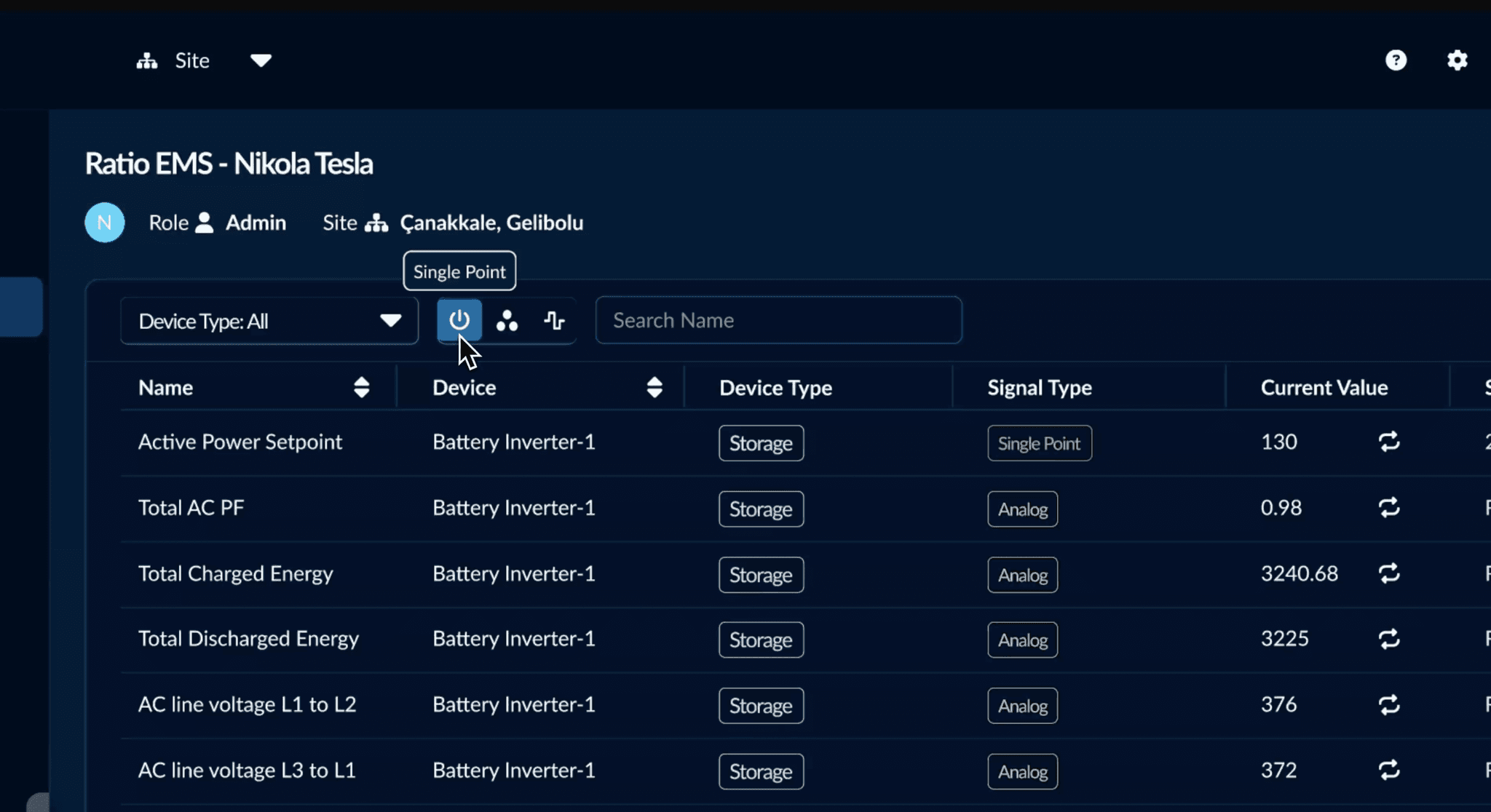
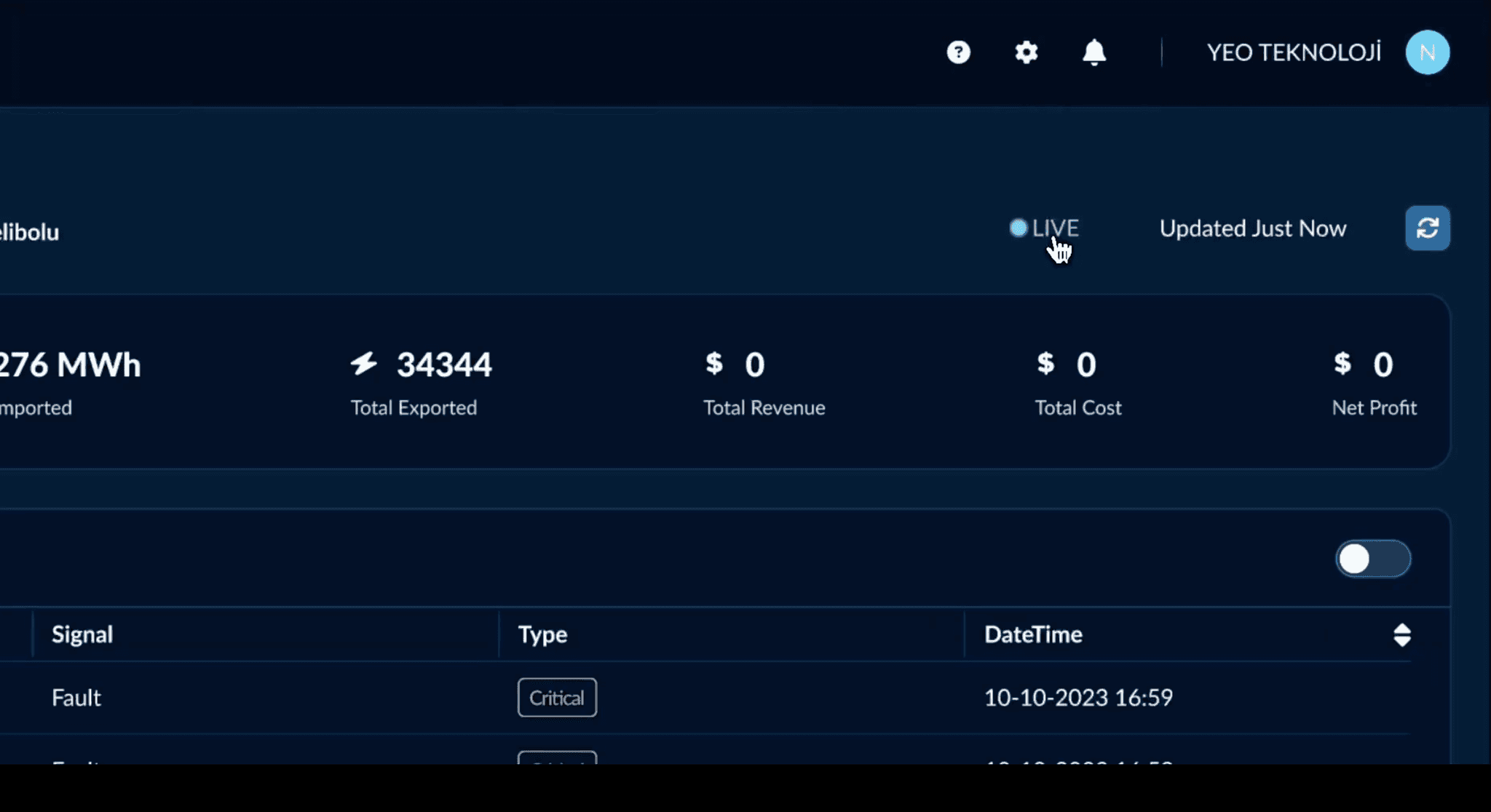
RESEARCH CONCLUDED THAT,
Target Audience

The RatioEMS Planning Feature is aimed at energy professionals and planners—users who need to efficiently schedule and optimize energy consumption. These individuals are typically familiar with advanced planning tools and seek detailed control over their energy management processes.
Unique Opportunity for RatioEMS Planning Feature
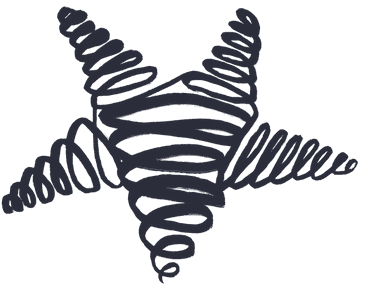
Unlike its competitors, the RatioEMS Planning Feature has a unique opportunity to stand out by enhancing both usability and functionality. While many energy management systems focus on advanced features that cater mainly to experts, RatioEMS can differentiate itself by offering a self-explanatory planning tool that simplifies complex planning tasks. This approach can attract a broader range of users, from experienced professionals to those new to energy planning.
Planning as a
Strategic Tool

The RatioEMS Planning Feature can be leveraged to enhance the energy scheduling experience by integrating essential components such as interactive calendars, automated scheduling algorithms, and real-time adjustments. By emphasizing features like predictive analytics and smart recommendations, RatioEMS can improve user engagement and streamline the planning process.
Identify & Synthesize

IDENTIFYING CORE PRODUCT EXPERIENCES
Product Principles
After thoroughly reviewing past research on energy planning and understanding the competitive landscape, I developed a set of product principles with my team to guide the evolution of the RatioEMS Planning Feature.
Ease of Scheduling
Make energy scheduling intuitive and accessible by integrating user-friendly interfaces and interactive elements. Focus on simplifying the creation, adjustment, and management of energy plans to ensure users can efficiently organize their schedules with minimal effort.
Consistency in Planning
Ensure that the planning feature is intuitive and seamlessly integrated into users' workflows. By making planning tasks easy to use and consistent, users will feel more confident and competent in managing their energy schedules.
Efficiency and Flexibility
Optimize the user experience by minimizing the steps required to set up and modify energy plans. Implement features such as automated scheduling algorithms and real-time adjustments to enhance flexibility and responsiveness, ensuring that users can adapt their plans swiftly to changing needs.

IDENTIFYING CORE PLANNING FEATURES
Product Use Cases
To enhance and better understand the planning feature in RatioEMS’s MVP, we created several user scenarios. These features are designed to simplify users' energy management processes and help them create more efficient plans.
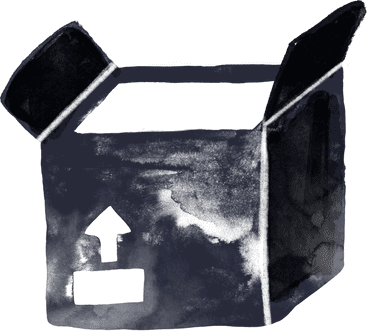
SCHEDULING SHORTCUTS
Quick and effortless shortcuts that allow users to create energy plans instantly. These features assist users in seamlessly applying energy plans that align with their current usage patterns.
Examples:
quickplan
Enables users to load an automatic energy-saving plan with one click. This plan is optimized based on the user’s current energy consumption data.
repeat
Creates recurring energy plans for specific intervals or days, eliminating the need for users to manually recreate the same plan every week or month.
copyplan
Allows users to duplicate an existing plan for another day or week, enabling fast replication of energy schedules.
adjustplan
Automatically updates the energy plan when there are sudden changes in energy prices or demand, helping users take advantage of cost savings.
pauseplan
Temporarily halts an energy plan in unexpected situations, such as production line shutdowns or reduced energy demand.
peakcontrol
Activates predefined restrictions to manage energy consumption during peak hours. This feature is particularly useful for reducing energy use during periods of high costs.

ENERGY CONTROL MECHANISMS
Control commands that allow users to dynamically manage their energy plans. These mechanisms help optimize energy usage through flexible, real-time interventions.
Examples:

CUSTOMIZATION & ADAPTABILITY
Tools that allow users to personalize and tailor their energy plans. These commands make the planning process user-friendly and optimized to specific needs.
Examples:
customplan
Enables users to create fully customized plans based on their unique energy needs. Plans can be structured around different time blocks, consumption goals, and budget considerations.
smartalerts
Sends notifications when energy consumption exceeds predefined limits, allowing users to intervene and optimize costs in real time.
flexitime
Creates dynamic time blocks for more flexible energy usage. This feature is ideal for businesses with fluctuating energy needs, allowing them to adjust schedules on the go.

IDENTIFYING KEY MECHANISMS
Planning Triggers in RATIOEMS
Two key types of triggers can enhance the RatioEMS Planning feature:
Automation Triggers: Automatically adjust energy schedules based on predefined rules. This includes:
Time-based (peak/off-peak hours),
Event-based (weather changes, equipment usage),
Predictive (machine learning-driven forecasts).
User-Driven Actions: Allow for manual control and flexibility, including:
Quick shortcuts (e.g., "Optimize for Energy Savings"),
Real-time adjustments to meet sudden demands,
Manual overrides for critical situations.
These triggers make planning smarter, more efficient, and adaptable to real-time needs.
Ideation

REFLECTING ON RESEARCH
How Should We Guide Our Ideation?
In our competitive audit of existing energy management systems, we assessed how various platforms handle planning features. As we move into the ideation phase for the RatioEMS Planning feature, we will focus on these critical questions to ensure our design meets user needs effectively:
🗓️ MemorAwareness & Access
How do users access planning features?
🔄 Education & Memory
How can users learn how to use planning features?
⚡ Fluidity
How does using planning features feel during the scheduling process?

UI IDEATION
Hypothesizing the Designs
In the context of designing the RatioEMS Planning feature, I explored different approaches to creating an effective and user-friendly interface. Here are the various design options, each evaluated on key metrics to determine the most effective solution:
Bucket: The Planning Interface
We explored different variations of the planning interface, focusing on how users will interact with planning controls and features.

